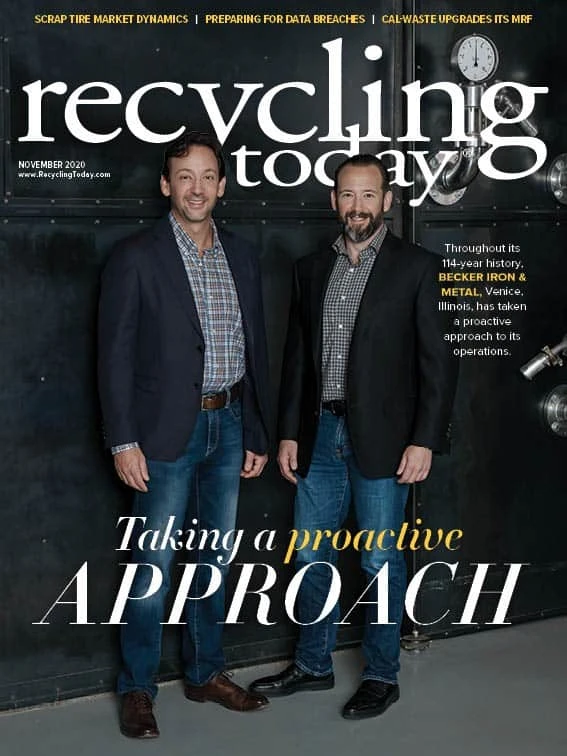“June, August and September seemed to be very busy months, with material flowing based on intermittent spikes in the market and the ebbs and flows of information about the virus and related stimulus packages,” a broker and processor based on the West Coast says. He says that momentum has stalled as of October.
Even with that slowdown, a processor and broker based in the Upper Midwest says scrap flows as of October are “way better” than they were earlier in the pandemic when lockdowns were in place and automotive manufacturing was curtailed. He estimates that his company is seeing 85 percent of the typical volume it would see.
However, he says his company has had to extend its buying region to bring in that volume. “We are supplementing the reduced volumes we’re seeing by extending our reach,” the source in the Upper Midwest says.
A processor and trader whose company has operations in the Southeast and Upper Midwest says, “Overall, we are in a good place generation- wise. Volumes seem to be pretty good. The bigger issue is selling red metals.”

He says that at the start of the pandemic, red metals fared better than aluminum, which experienced soft demand. But that scenario has flip-flopped more recently. He adds that it seems as if every copper consumer has a planned or unplanned outage scheduled as of mid-October or that they are drawing down inventories as the year-end approaches.
The second contact in the Upper Midwest says he expects red metals scrap to be challenging to sell through the end of 2020 as mill buyers take a “wait and see” attitude and opt to make just-in-time or last-minute purchases because they know metal is available.
The first contact in the Upper Midwest says spreads for aluminum scrap grades are “all over the board,” which has made his company reluctant to engage in many contracts. “We are not going to do that many,” he says of 2021 contracts. “There is too much uncertainty with spreads.”
“Overall, we are in a good place generation-wise. Volumes seem to be pretty good. The bigger issue is selling red metals.” – a processor and trader based in the Upper Midwest whose company also has operations in the Southeast
The second source in the Upper Midwest says secondary aluminum scrap grades have increased in pricing relative to some primary grades. He describes the value differences as “weird,” but says his company has been able to sell what it needs to, though spreads are “all over the board.”
Like the other contact in the Upper Midwest, his company also is hesitant to engage in much contracted business for aluminum scrap in 2021, preferring to maintain its flexibility.
Sponsored Content
Labor that Works
With 25 years of experience, Leadpoint delivers cost-effective workforce solutions tailored to your needs. We handle the recruiting, hiring, training, and onboarding to deliver stable, productive, and safety-focused teams. Our commitment to safety and quality ensures peace of mind with a reliable workforce that helps you achieve your goals.
The source on the West Coast says export demand for secondary aluminum grades is good, citing “decent flow” of material to Korea, Malaysia, Taiwan and India. Pricing also is inching upward for this material along with the London Metal Exchange price for aluminum alloy. However, arranging ocean shipping has been challenging, particularly out of the Pacific Northwest and Canada, he says.
Trucking also has been an issue. Both contacts in the Upper Midwest describe increasing rates and reducing availability. “Trucking has been a headache beyond what is normal,” the first contact in the Upper Midwest says, adding that rates have increased by 40 percent to 50 percent on some lanes.
Get curated news on YOUR industry.
Enter your email to receive our newsletters.

Explore the November 2020 Issue
Check out more from this issue and find your next story to read.
Latest from Recycling Today
- Hindalco to invest in copper, aluminum business in India
- Recycled steel price crosses $500 per ton threshold
- Smithers report looks at PCR plastic’s near-term prospects
- Plastics association quantifies US-EU trade dispute impacts
- Nucor expects slimmer profits in early 2025
- CP Group announces new senior vice president
- APR publishes Design Guide in French
- AmSty recorded first sales of PolyRenew Styrene in 2024








